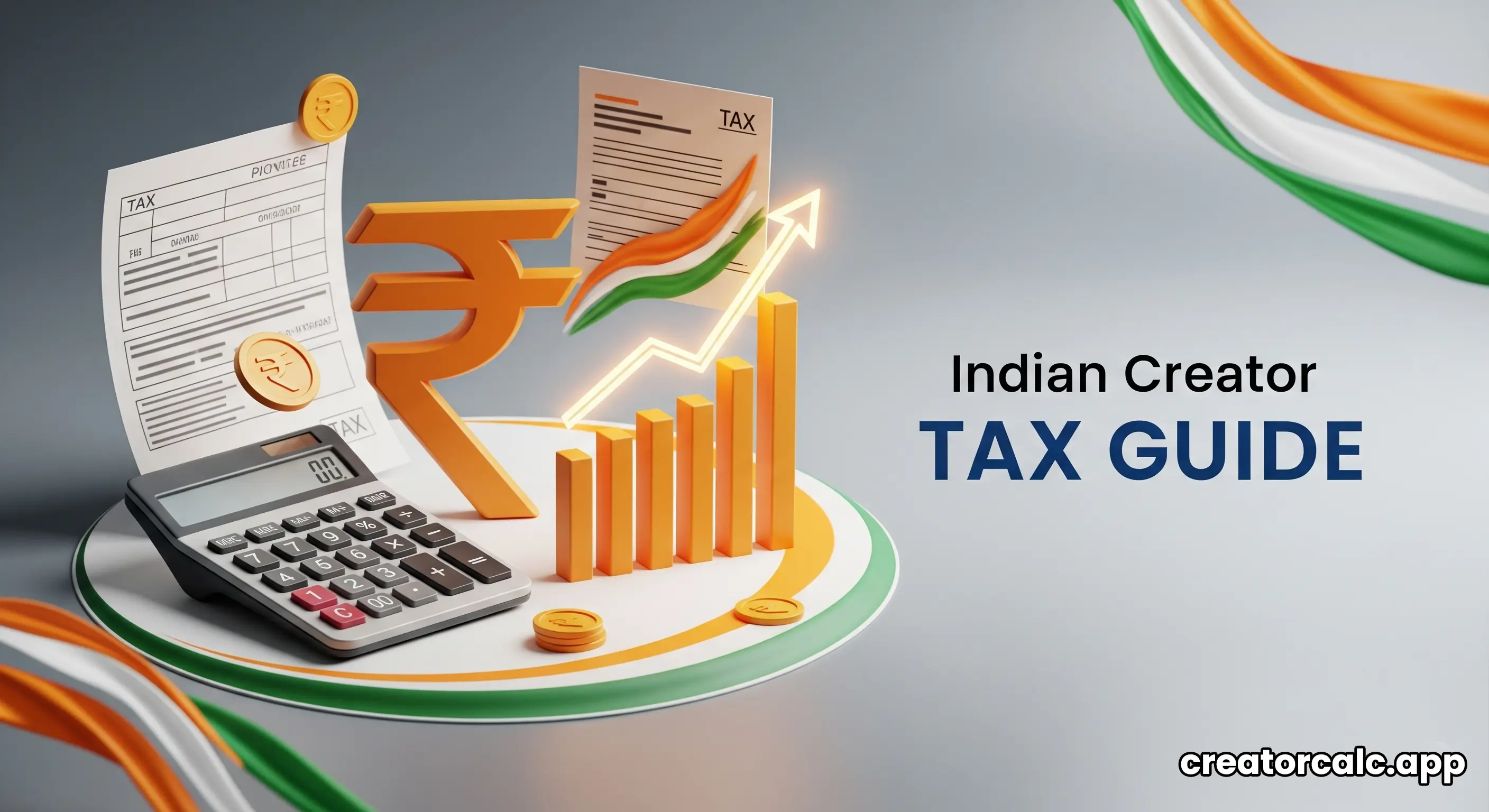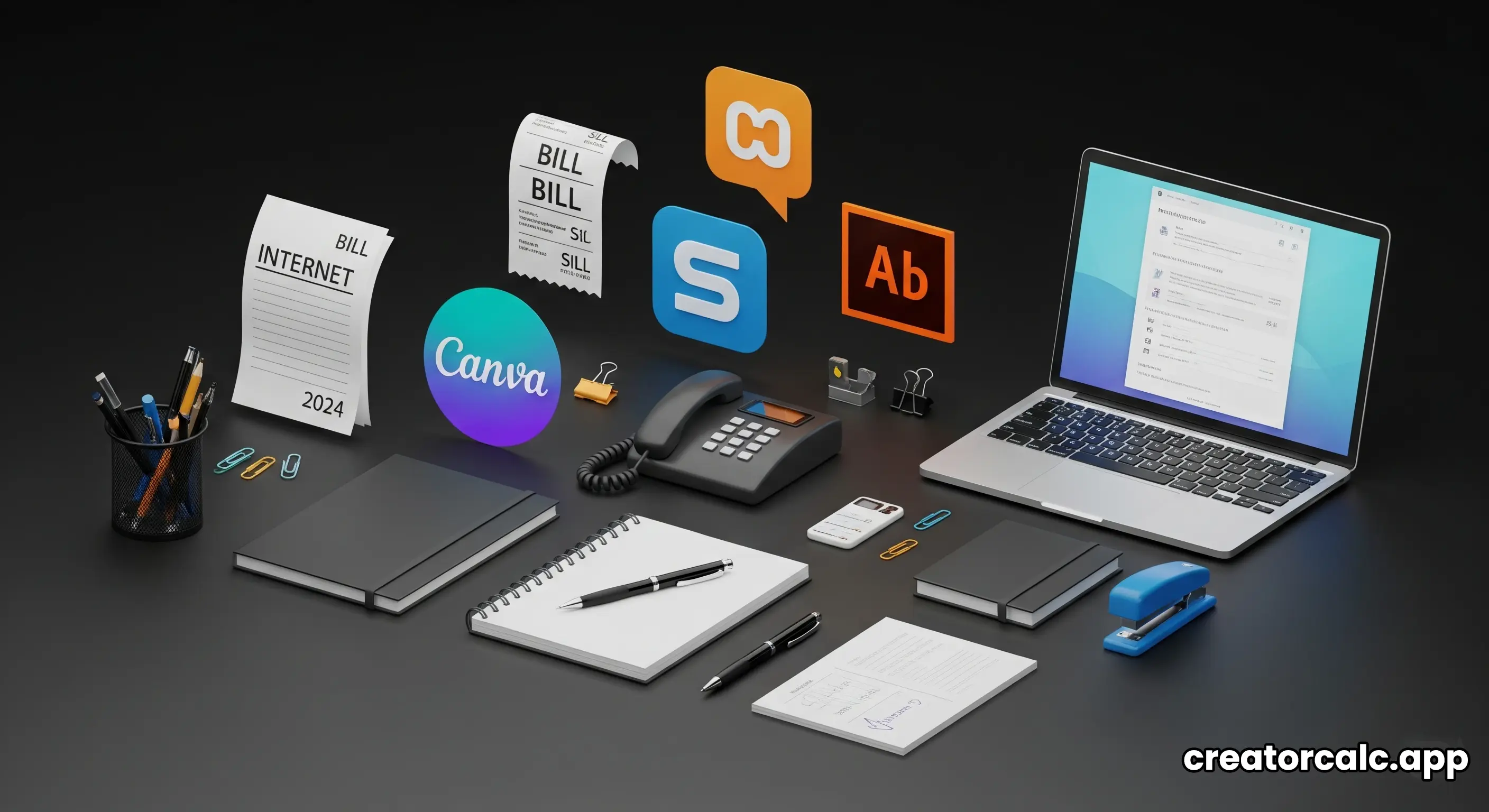As a creator or freelancer in India, you are your own boss. It's an exciting journey. But being your own boss also means you are responsible for your own taxes. Many creative professionals find taxes confusing and scary. This simple tax guide for creators will help you understand the basics of income tax and GST in India.
Understanding your tax obligations is not just about following the law. It's also about saving money legally. By knowing the rules, you can claim expenses and reduce the amount of tax you pay. Let's make taxes simple, so you can focus on your creative work.
Disclaimer: This article is for informational purposes only and is not professional tax advice. Please consult with a qualified Chartered Accountant (CA) for advice specific to your situation.

Understanding Your Income as a Creator
First, you need to know what counts as "income" for tax purposes. As a creator, your income can come from many places:
- YouTube AdSense revenue
- Etsy shop sales
- Brand sponsorships or brand deals
- Affiliate marketing commissions
- Selling digital products or courses
- Freelance client work
All of this money is considered your business income. You must report this total income when you file your taxes.
Income Tax for Creators and Freelancers
Like any other professional, you have to pay income tax on your profits. Your profit is your total income minus your business expenses.
The Presumptive Taxation Scheme (Section 44ADA)
This is a very popular option for freelancers and professionals, including many creators. It makes filing taxes much simpler.
- Who can use it? Professionals (like writers, designers, digital artists) whose total gross receipts are less than ₹75 lakhs in a financial year (as per the updated limit).
- How it works: You can declare 50% of your total gross receipts as your profit. You then pay income tax on this 50% amount, according to your tax slab.
- The Big Advantage: If you choose this scheme, you don't need to maintain detailed expense records (bookkeeping). It simplifies everything.
Advertisement
Claiming Business Expenses (If Not Using Presumptive Scheme)
If your expenses are more than 50% of your income, or your income is over the limit, you should claim your actual expenses. This is more work but can save you more tax. Common expenses you can claim include:
- Internet and phone bills
- Software subscriptions (e.g., Adobe, Canva)
- Electronics like a new camera or laptop (as depreciation)
- Office rent (if you have a dedicated space)
- Marketing and advertising costs
You must keep all bills and receipts for these expenses as proof.

GST (Goods and Services Tax) for Creators
GST is another important part of this tax guide for creators. It is an indirect tax.
When Do You Need to Register for GST?
You need to register for GST if your total turnover (total sales/receipts) in a financial year crosses a certain limit.
The general threshold is ₹20 lakhs. If your annual income from your creative business is more than ₹20 lakhs, you must register for GST. For some special category states, this limit is ₹10 lakhs.
If you sell physical goods (like on Etsy) to customers in other states, you may need to register for GST regardless of your turnover. It is best to check the latest rules with a CA.
How Does GST Work?
Once you are registered, you must charge GST on your services or products. The current rate for most digital services is 18%. You collect this GST from your clients or platforms and pay it to the government. You can also claim an Input Tax Credit (ITC) on the GST you paid for your business expenses.
Frequently Asked Questions (FAQs)
1. Is income from YouTube or Google AdSense taxable in India?
Yes, absolutely. Any income you receive in your Indian bank account from foreign companies like Google or Etsy is considered export of service. It is part of your total income and is fully taxable under Indian law.
2. What is TDS for freelancers?
If you work with an Indian company as a freelancer, they may deduct TDS (Tax Deducted at Source) before paying you. This is usually 10% of your payment. You can claim this TDS amount back when you file your income tax return.
3. Do I need a Chartered Accountant (CA)?
While it's not mandatory, it is highly recommended. A good CA can help you save a lot of money and ensure you are following all the rules. They can guide you on choosing the right tax scheme and help with GST filings.
4. How do I pay advance tax?
As a freelancer or business owner, you are required to pay your income tax in installments throughout the year. This is called advance tax. You need to estimate your annual income and pay tax on it in four quarterly installments (by June 15, September 15, December 15, and March 15).